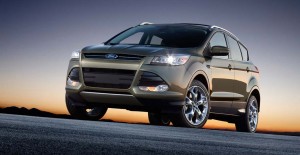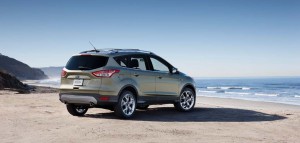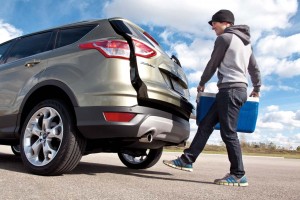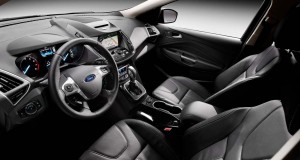Beauty is clearly in the eyes of the beholder, and seldom is that more true than in the automotive market, where fiery debates can break out over even the smallest design details.
So expect some fierce disputes when the subject turns to the new 2013 Ford Escape, which is making its debut at the L.A. Auto Show this week. Following in the tread marks of the bigger Ford Explorer, the new Escape is migrating from its traditionally boxy, truck-like shape to a more lithe, car-like silhouette that Ford hopes will move it to the center of the fast-growing compact crossover segment.
That transformation could prove particularly well-timed as Ford has grabbed the top spot in the small ute niche – taking advantage of the production cuts suffered by long-term segment leader the Honda CR-V due to the earthquake and tsunami that struck Japan last March. Honda is rushing to get its plants back up to speed as it rolls out a replacement for its own “cute-ute,” which had led the market since its 1996 launch.
“We’re injecting a style aspect to it, which consumers are saying, ‘We want, (but) don’t pull back one iota in the utility capability,’ ” said Mark Fields, Ford’s President of the Americas, during a recent Detroit backgrounder on the all-new 2013 Ford Escape.
That suggests that buyers may be more influenced than ever by the technology and features Ford is building into the new crossover-utility vehicle, starting with a trick “proximity sensor” that can detect the wiggle of a foot under the rear bumper to get the power hatchback to pop open. Notably, Honda won’t offer a power hatch on the fourth-generation CR-V.
The sensor system uses to trigger the tailgate is being borrowed from Ford’s new C-Max “people mover,” which goes on sale early next year. The C-Max will, in turn, offer both a plug-in hybrid and a more conventional gas-electric driveline. The 2012 Ford Escape, on the other hand, abandons the slow-selling hybrid offered on the previous model.
That doesn’t mean Ford is ignoring clear customer demand for better mileage. The new version of the Escape will be offered with two – count ‘em, two – versions of the Ford EcoBoost powertrain, a 1.6-liter mileage miser and an only slightly less stingy 2.0-liter EcoBoost. The CUV will also be available with a 2.5-liter inline-four carried over from the outgoing Escape.
There’ll be plenty of technology to go around, including an updated version of the MyFordTouch infotainment system that Ford promises will address some of the complaints buyers had about the original touch-sensitive system.
But other changes will be less high-tech, though equally significant, such as a redesign of the rear seats that will allow them to fold over without removing the headrests, as was required in the outgoing Escape.
The new crossover will get an expanded palette of safety features, including a new Blind-Spot Intervention System, or BLIS, Cross-Traffic Alert to watch for oncoming vehicles when, say, backing out of a mall parking spot, Curve Control to help maintain stability when entering a corner too fast, and more. The 2013 Ford Escape will also be offered with a system that can virtually park the car automatically.
Like many of Ford’s other new products, the 2013 Escape was designed to be sold on a global basis – and with only modest tweaks, the crossover will be available in markets from China to Europe, where it is marketed as the Ford Kuga.
The new Escape, in U.S. trim, is expected to get about 5 mpg better than the old model, on average, with Fields asserting that Ford expects the new crossover to become the highest-mileage model in its segment.




